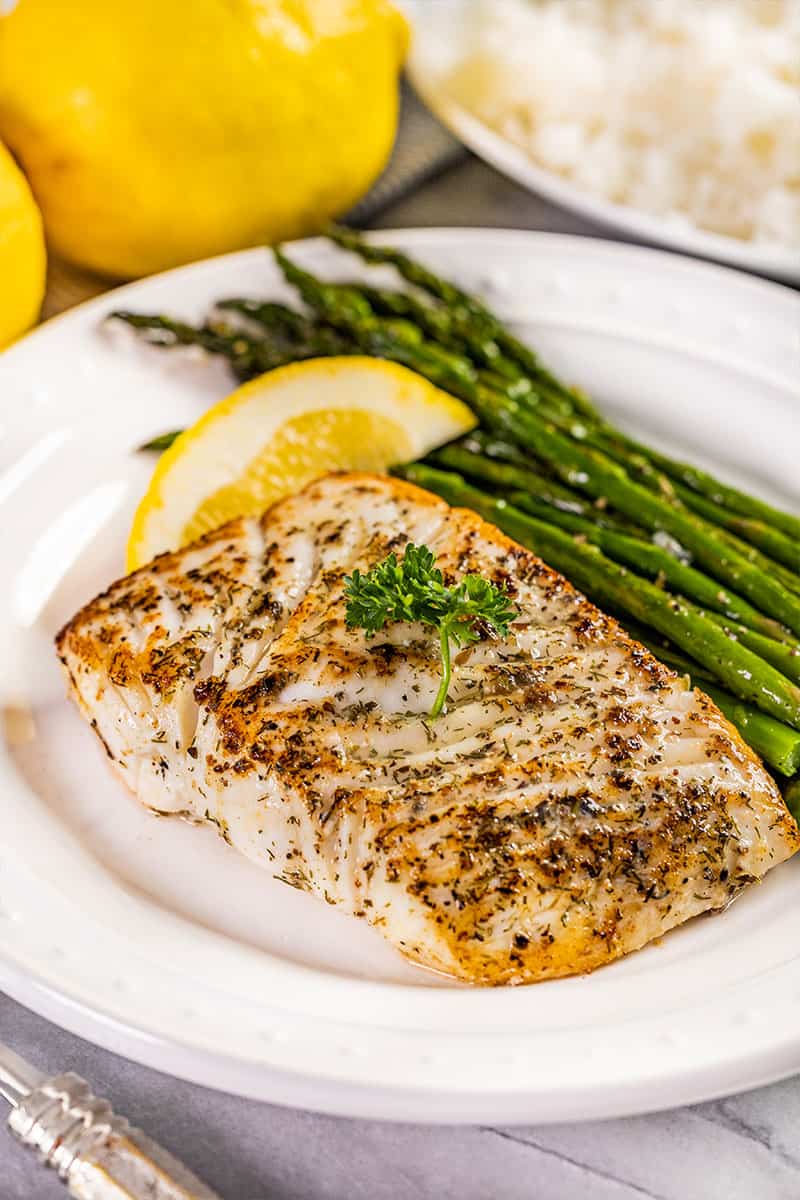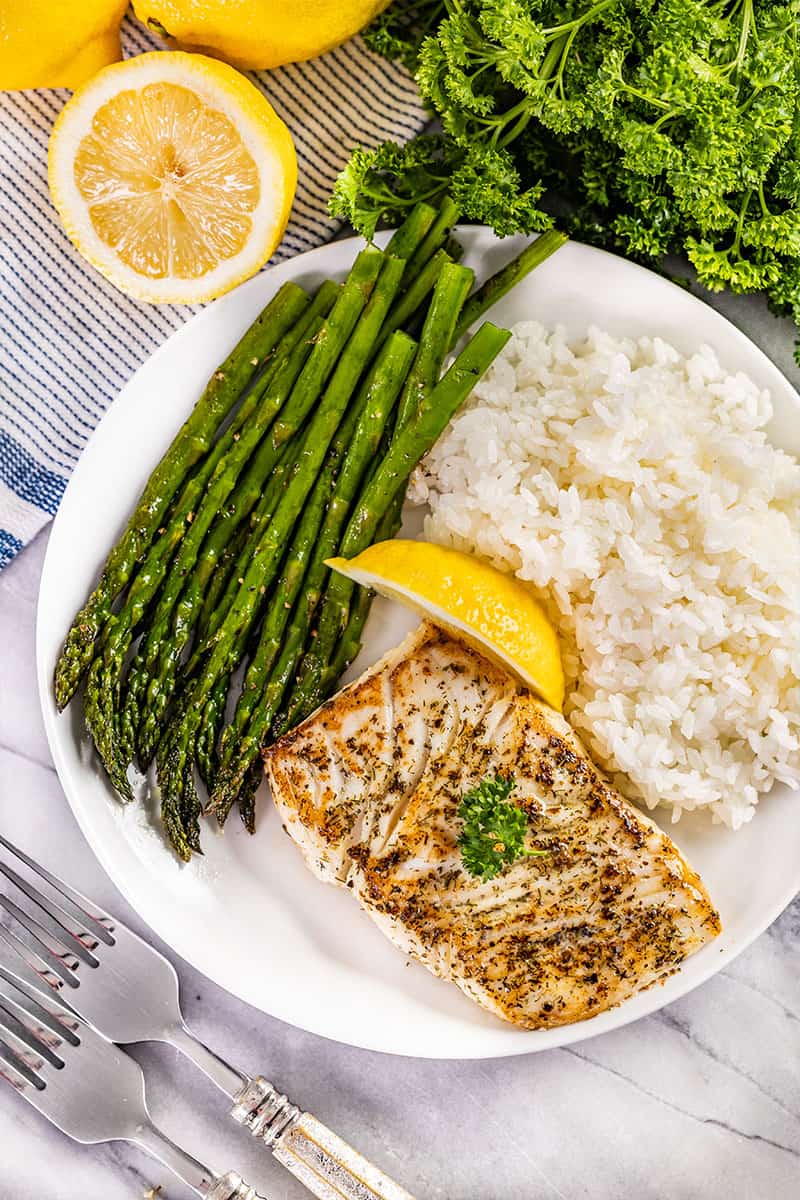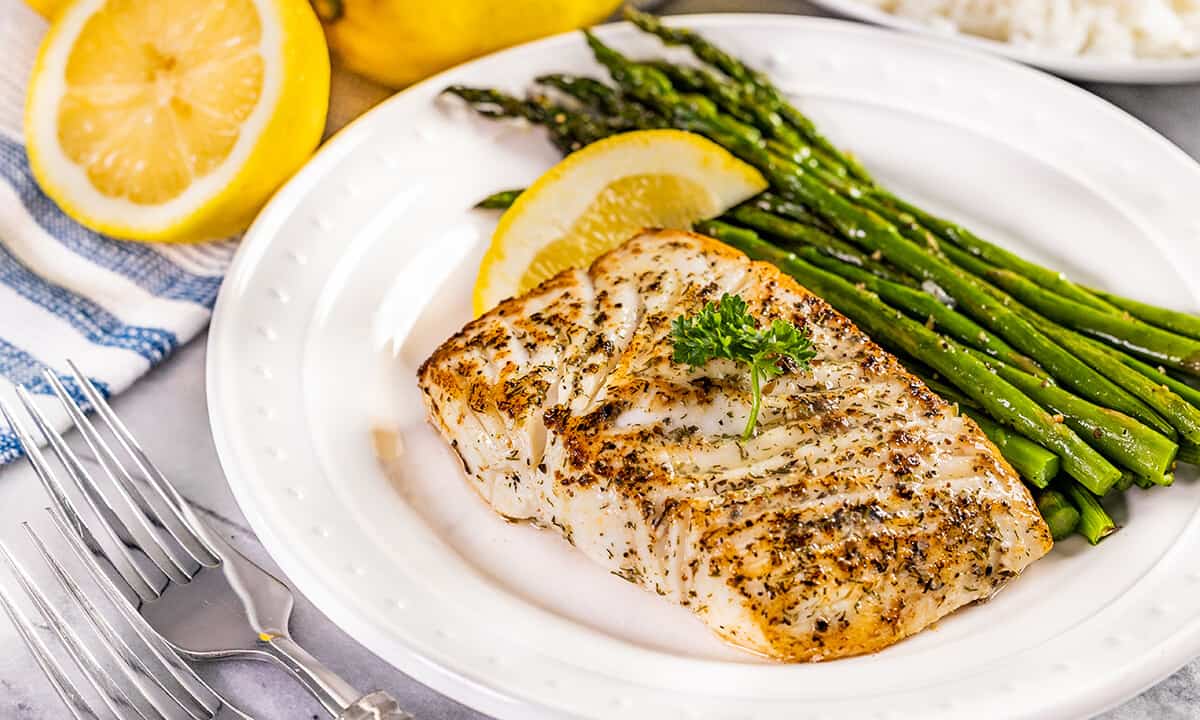Pan searing is one of our favorite ways to cook fish. Follow our guide for a crispy, golden outside, and a tender and juicy inside that produces the most delicious pan seared fish every time!

Chicken, beef, pork, and the like are all classic protein options that we all know and love. But, if you don’t eat meat — or are simply tired of classics like roasted chicken or pork chops — seafood is another great option! Fish is one of those proteins that is so versatile. You can bake it, roast it, or grill it, and one of our personal favorite cooking methods is pan-seared. Many chefs have a tendency to feel intimidated when it comes to preparing fish at home. We promise you, this is easier than you think! Cooking fish in a pan is a simple and straightforward method. It’s also one of the fastest ways to cook seafood. You’ll need minimal equipment (just a pan and your stove!) and you can marinate and season it in a myriad of ways. You can transform any type of fish into a flavorful dish. It only takes a few minutes to prepare and the results are simply delicious.
How To Choose The Perfect Fillet:
Learning how to pan sear fish starts with learning how to choose the perfect fillet of fish. If you’re lucky and live near the water, we always recommend sourcing fish locally. There’s nothing quite like freshly caught fish! Otherwise, you can head to the fish counter at your local grocery store. Wherever you purchase yours, look for fillets with a mild smell. Fresh is preferable, though frozen and defrosted are very common as well. A strong “fishy” or ocean smell is an indicator that the fish is not fresh, so be on the lookout!
Different Types of Fish Fillets:
Fish comes in all shapes and sizes. It makes sense considering how many different types of fish there are on the market. Thin fillets, like tilapia or sole, will require less cooking time and are more prone to breaking when flipped. Thicker fillets like halibut, sea bass, or cod are much sturdier and will hold together better. Fish steaks like swordfish or salmon require much longer cooking times, about 8-10 minutes per inch of thickness. Choose your preference!
A Note On Frozen Fish:
Fish can be purchased frozen in single filets or larger quantities. Fish should thaw overnight in the refrigerator, or can thaw immersed in cold water only. Once defrosted, fish should be used immediately.
Should I Remove The Skin?
We’re personally huge fans of seared fish with the skin on it. It crackles and crisps up so nicely, and the added bit of fat from the skin can lend a lot of extra flavors. If you choose to cook your fish with the skin on, sear it skin side first. And, if you want to remove skin, make sure to do so carefully with a sharp knife before you get started.
Can I Marinate Pan Seared Fish?
Absolutely! Seared fish is delicious when it’s been marinated. An important point to mention is that you should never marinate fish for longer than 15 minutes. Unlike other proteins like beef or lamb, the acidity of the marinade will break down the fish if you leave it for longer.

Storage and Reheating Instructions
If you have any leftover seared fish, you can store it for up to 3 days in an airtight container in the fridge. We recommend that you reheat it in the microwave in 30-second increments until warmed through.
If you like this recipe, you may be interested in these other delicious fish recipes:
Watch the video below where Rachel will walk you through every step of this recipe. Sometimes it helps to have a visual, and we’ve always got you covered with our cooking show. You can find the complete collection of recipes on YouTube, Facebook Watch, or our Facebook Page, or right here on our website with their corresponding recipes.


I like the new web page, but where would I find my saved recipes
I’ve cooked this and followed the recipe (I used sole). It was delicious and today being Good Friday, we’re having fish (sole again) and I’m using this recipe. It was EXCELLENT!
I use several spoons full of olive oil and add Rosemary, fresh or powdered garlic, basil and fresh lemon along with a splash of liquid smoke. I also toss in some chopped mini point peppers, mushrooms, tomatoes & sometimes avacado and sprinkle with asiago parmesan!! Full meal in one pan!
I worked in the housewares demo industry for a number of years as a representative for a number of different manufacturers of cookware (pots and pans), and most non-stick cookware instructions specifiy that the non-stick coatings should only be heated to medium or medium high. Anything above that will not only void the warranty on your cookware, but also cause the coatings to peel off into your food or to emit a gas, both of which can be carcinogenic. I suppoe that is why cast iron and stainless steel skillets are making a come back.Anyhow, the point is that your picture looks like you are using a non-stick pan but you specify using high heat in this recipe's cooking instructions.
I cook fish all the time at work. I'm going to have to try this method because right now I basically have no idea what I am doing.